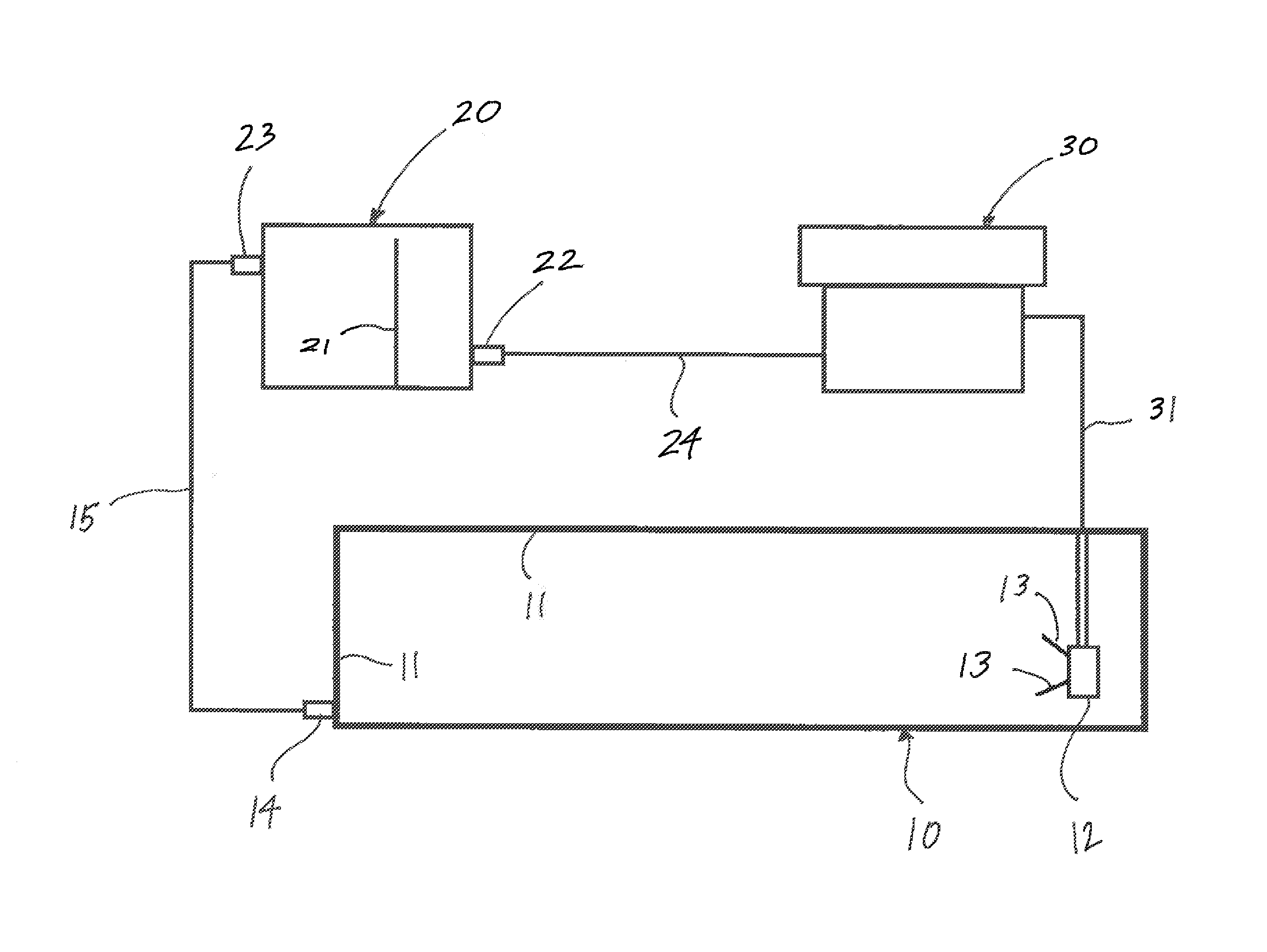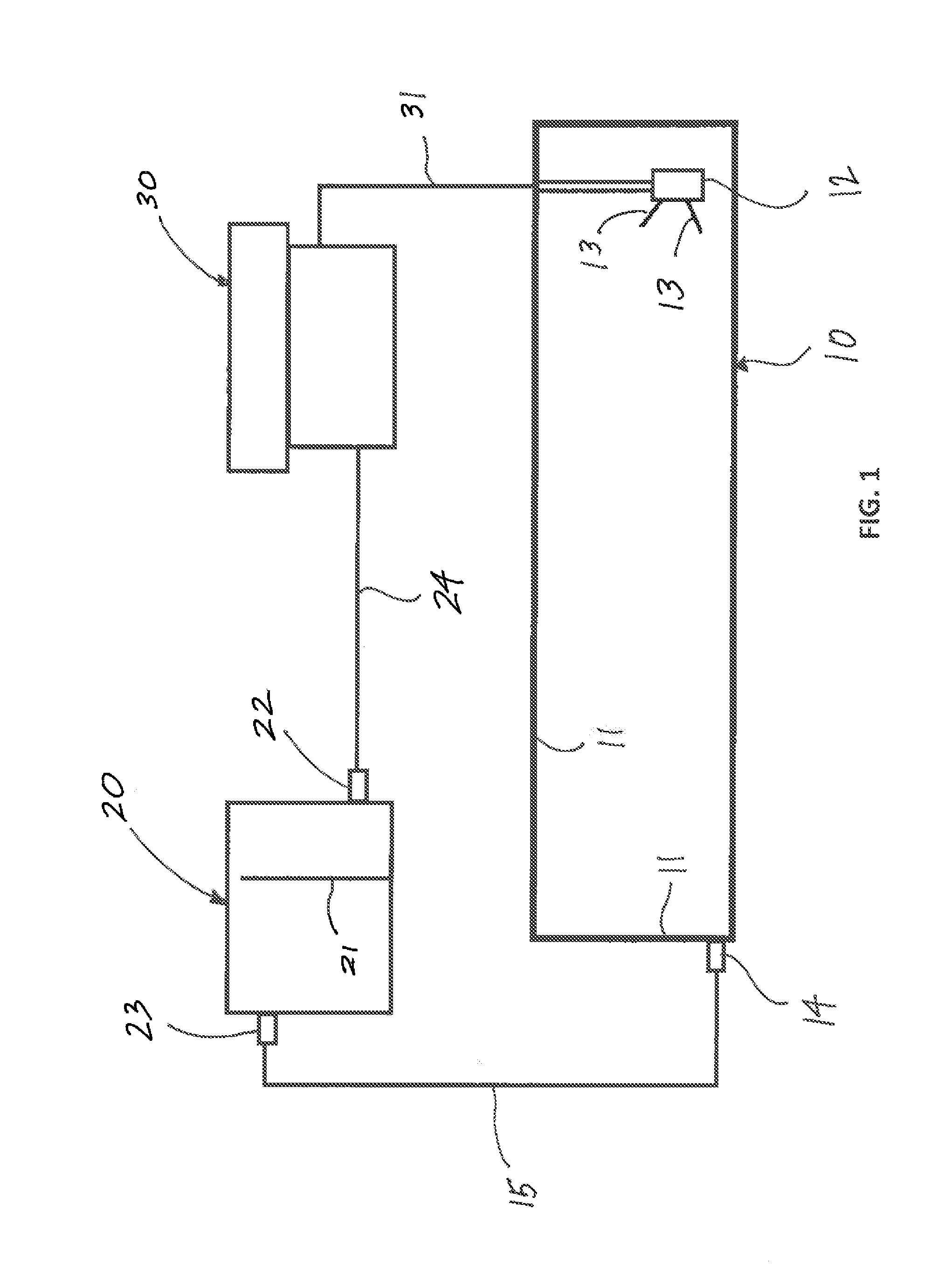Method for automated, closed loop cleaning of tanks
a technology of closed loop cleaning and closed loop cleaning, which is applied in the direction of cleaning hollow objects, cleaning processes and utensils, chemistry apparatus and processes, etc., can solve the problems of limited tank capacity, harmful to personnel and the surrounding environment, and tank cleaning, etc., and achieves significant economic valu
- Summary
- Abstract
- Description
- Claims
- Application Information
AI Technical Summary
Benefits of technology
Problems solved by technology
Method used
Image
Examples
Embodiment Construction
[0023]The present invention comprises a method for cleaning tanks including, without limitation, frac tanks and tanks associated with operations on land-based drilling rigs. The cleaning method of the present invention reduces waste water consumption, cleaning time, and safety risks inherent with existing tank cleaning operations.
[0024]In accordance with the method of the present invention, a tank to be cleaned is initially assessed for recoverable fluids, as well as the safest and most efficient cleaning method and best practice for removing residual fluids and cleaning of such tank. Substantially all drilling mud and / or other fluid remaining in such a tank is first removed and saved; recoverable fluids suitable for reuse or other salvage can be segregated and saved, as such fluids may have economic value.
[0025]Fluids (including residual fluids) present on walls, floors or other internal surfaces of such tank can then removed with a squeegee or other similar method. Such residual f...
PUM
 Login to View More
Login to View More Abstract
Description
Claims
Application Information
 Login to View More
Login to View More - R&D
- Intellectual Property
- Life Sciences
- Materials
- Tech Scout
- Unparalleled Data Quality
- Higher Quality Content
- 60% Fewer Hallucinations
Browse by: Latest US Patents, China's latest patents, Technical Efficacy Thesaurus, Application Domain, Technology Topic, Popular Technical Reports.
© 2025 PatSnap. All rights reserved.Legal|Privacy policy|Modern Slavery Act Transparency Statement|Sitemap|About US| Contact US: help@patsnap.com


